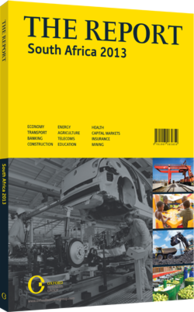OBG talks to Tshepo Lucky Montana, Group CEO, Passenger Rail Agency of South Africa (PRASA)

Interview: Tshepo Lucky Montana
To what extent is the passenger rail network able to meet the demands of the market?
TSHEPO LUCKY MONTANA: In the past, our country had the capacity to design, manufacture, and maintain rail lines and fleet, but this has been lost over the last three decades due to severe underinvestment. Consequently, we have inherited an unreliable and outdated rail system that is technologically obsolete and unable to meet customer expectations. The system is struggling to support rapid urbanisation and industrial growth, which has put a lot of pressure on the road network. People are calling for better public transport, and we must develop a rail network and fleet that offers the connectivity and mobility needed to support our cities and the wider economy to function better.
What plans are in place to drive development in passenger rail and improve efficiencies?
MONTANA: Due to the lack of investment in recent years, upgrades alone are not enough to eliminate inherited inefficiencies, and a major overhaul is required. We are embarking on a 20-year investment programme worth an estimated R123bn ($15bn), targeting 7224 new modern coaches. Key to this plan is that rolling stock will be designed and built domestically – we hope that as much as 69% of components will be supplied locally – thus revitalising and securing the future of a South African rail industry. Furthermore, if you look at what is happening throughout the continent, with the African Union and governments in the region emphasising the need for better rail connectivity, there is great opportunity for South Africa to supply the region with new locomotives and coaches at competitive prices.
Is privatisation of the rail network an option?
MONTANA: For much of the population, spending on transport forms a substantial portion of their disposable income, and public transport fees need to be subsidised by the government to maintain affordability. Some have raised the question of privatising the rail systems, but in its current state, the passenger rail system would not be attractive to private enterprise. The system is in desperate need of expansion and modernisation, and if the private sector took this on alone, it would have to increase passenger fares to foot the bill. Privately run passenger rail systems work in Europe today because there are sufficient passenger volumes and economic activity to support a viable commercial model. The density of European cities is such that the different rail systems are constantly busy through the day, fed by an integrated transport network. But South Africa is just not there yet, especially for intra-city routes. Our strategic plan does, however, recognise that the future of long-distance intercity travel lies in high-speed railways, and that this should not be financed by the state alone, but should rather be tendered to the private sector on 40-year contract concessions.
How can the industry overcome a cultural aversion towards public transport?
MONTANA: We are seeing encouraging trends, thanks to the launch of the Gautrain and other interventions and upgrades in public transport options in Gauteng, the Western Cape, and KwaZulu-Natal. That said, we are not seeing benefits in terms of journey times and service integration, so there are still many challenges to be addressed on the service side. The cost factor is another significant issue, and until it becomes cheaper to use rail than operate a car, passengers will not make the transition. On the roads, meanwhile, it is clear that the country cannot continue to compensate road users. As such, licensing fees must take into consideration the impact that cars are having on pollution and congestion. There also needs to be a fundamental change in the public debate surrounding toll roads and levies, which is presently dominated by the middle- to upper-income car owners who can afford to be more organised and mobilise legal support.
You have reached the limit of premium articles you can view for free.
Choose from the options below to purchase print or digital editions of our Reports. You can also purchase a website subscription giving you unlimited access to all of our Reports online for 12 months.
If you have already purchased this Report or have a website subscription, please login to continue.

